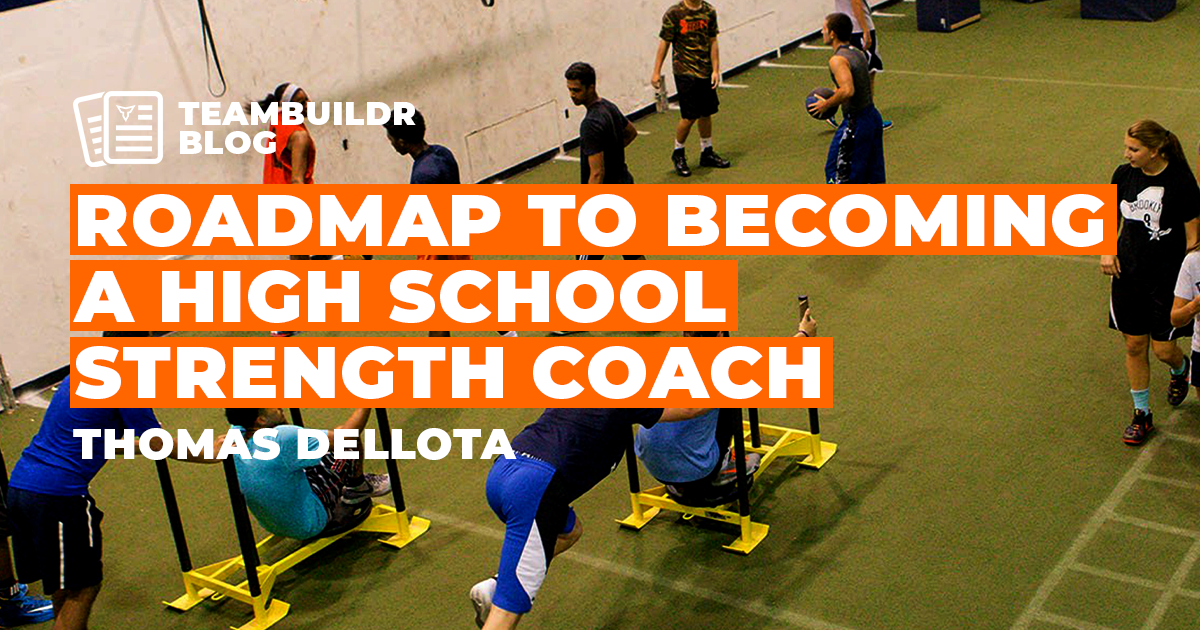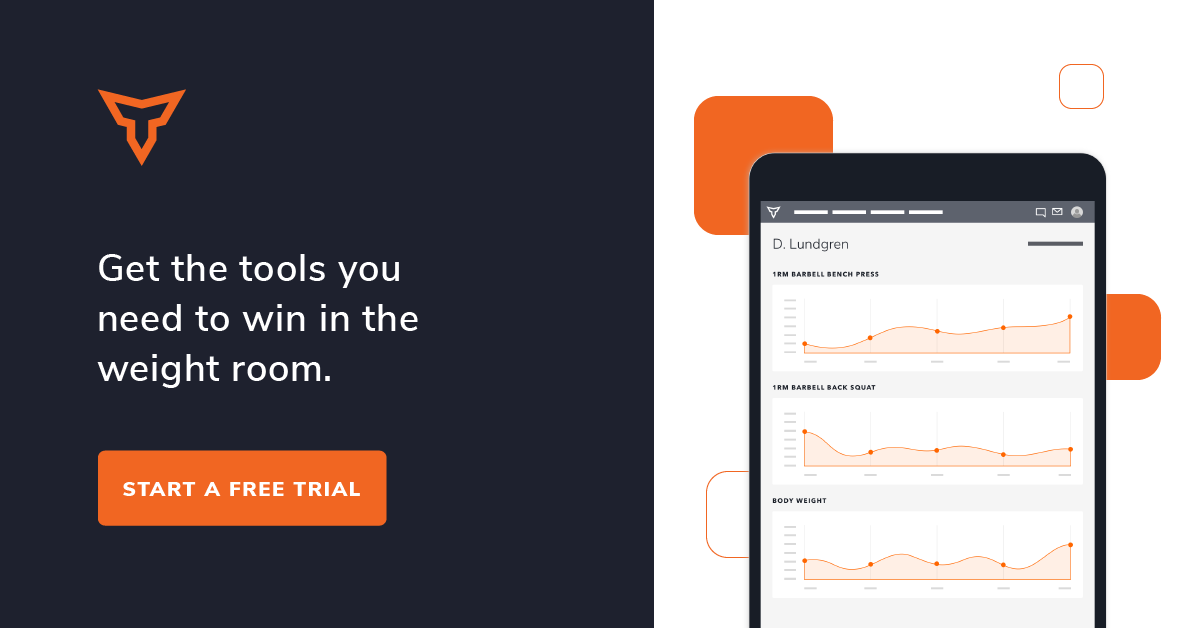How Strength Coaches Can Bulletproof Ideas for Success
Every great program starts with an idea. Over time that idea becomes fleshed out more and more until one day the idea that started off in your head is alive and in front of you. The problem I used to run into, was that when I’d go to a clinic there were so many great coaching ideas I had either from listening to the presenters or by talking with people there. If you’ve never experienced going to a professional clinic, it is something that you absolutely need to do. The way it feels to be surrounded with people that are as passionate and excited as you are, if not more, is something really powerful. I wrote about how to thrive at your next clinic, but thriving at a clinic is definitely different knowing what new ideas are good fits for your program.
The tool I use for sorting new coaching ideas is like a mental funnel. At the top of the funnel all the ideas I picked up or came with goes in, and as they work their way to the bottom there are specific questions that I ask which work as screens. If the ideas passes through all the different screens and make it out of the funnel then I might use it with some athletes as a trial run. If it gets hung up by one of the screening questions then I make notes about the idea and save it to my “Mad Scientist” computer file for a time that this might be able to work in the future. Here are the series of questions I have used for years which should be a good starting point for you.
Does This Fit What We Do?
Every year I see some of our undergraduate Exercise Science students racking their brains trying to come up with their philosophy statement. Each and every time I am asked to read their statement it makes me laugh because they have no clue what their real philosophy is simply because they have never really coached anyone yet. A philosophy statement is not a 2 to 3 sentence statement that you put down on a sheet of paper it's the things that you do you do day after day that defines your philosophy. When you hear of a new idea or come up with one yourself, it first needs to be a good “fit” for what you are currently doing. From my experience, if it isn’t a good fit, people will be apprehensive about trying out the idea. Say your program is based heavily in weightlifting and powerlifting movements, everyone is going to look at you like you’re crazy if you program a block of manual resistance H.I.I.T. work. Right? If experience has taught me anything it's that even the best exercise in the world done with terrible effort will always yield pathetic results. So make sure that whatever you’re trying fits in your program.
Can We Use This With Teams?
When I write programs, I write it for teams. I guess that is the blessing and curse of being a college strength coach because there is never a point in time where I’ll work with a single person. In most cases, the smallest group I’ll have in for a team lift is about 10 women’s golfers and the largest is football with up to 140 people. That is a wide range of skills, abilities, body types, training ages, and backgrounds. When I look at a potential coaching idea, I ask myself how it would work with 25 people doing it at the same time. That means a couple of things. First and foremost it is about making sure if we have the correct amount of equipment. If you only have one leg extension machine, can you successfully program it for a team of 20 to use it? Not really, when 1 athlete is using it, 19 others are left scratching their head. If it cannot be done in larger groups, then it doesn’t make it through. Next and almost important is figuring out if this new idea is teachable in large numbers. Even the most coaching intensive programs I program still will have about 15 people doing it at once. In that case, everything that I introduce has to be able to be taught to a team at once.
What Are The Risks And The Rewards For This?
Being a strength coach is a job that has a razor thin margin of error. There needs to be a balance of prescribing the right training loads to provide a supercompensation effect without creating too much overload and having the athlete get hurt. Early on my career, I didn’t understand this idea. For too long I kept pushing the athletes to do as much as they can, all the time. It was more reps, more weight, more training sessions. While some people were physically and mentally prepared to handle this sort of training but the majority of people couldn't. Instead of seeing new personal bests at the test out sessions, we saw way too many people unable to participate because of soft tissue injuries. Now I look at ideas through a different lens. I realize it is my job to provide the minimum amount of a stimulus to produce the appropriate results. Eccentric loading is a great way to get people stronger, but should I do supramaximal eccentric loading with novice athletes? Of course not, there is too great of risk for the same results I can get with a basic strength program. New ideas move on only if I and my staff are together in thinking that it is not going to put athletes in an increased risk of getting hurt.
How Does This Compare To What We are Currently Doing?
The last and final filter I use is one of the most common sense ideas that people don’t ask enough. Is this going to offer better results than what I am doing already? I understand that people crave variation in their life. But there is a difference in making slight changes in programming to provide that variation instead having programming ADD. What I mean by that is: are you making changes in your program because you are bored or are the athletes no responding to the program? Let me phrase this another way. Looking at past results, my programs are really good at getting people stronger, jump better, and accelerate well. One thing that isn’t improving at the same rate as those other three attributes getting people change direction better. So when it comes down to it, if I hear about new coaching ideas on getting people stronger, of course I make note of it, but unless it shows to improve their change of direction ability then I’m probably not going to implement it.
One of the best things in this profession is there is no “right” way of training. It all depends on the situation you find yourself coaching in and the athletes that you are working with. Don’t get me wrong, there are certain fundamental theories that provide a framework on training, but there is nothing set in stone about how to get results. Which also makes something right for me, it might not fit into your program and that is perfectly fine. The idea about how to funnel and screen new ideas has served me well for a long time and what you use as screener questions might be different than mine, the idea will work for you. Part of knowing what you stand for, is also knowing what you don’t stand for. Getting ideas out of your head that don’t align with what your program is about will free up more time for you to focus on what your program does stand for. Just remember, keep track of those discarded ideas, because change is inevitable and just because something doesn’t fit right now, doesn’t mean it never will. So keep learning and trying out new ideas.
Subscribe to our blog
Subscribe to receive the latest blog posts to your inbox every week.
Related posts

Financial Literacy for Strength Coaches

Roadmap to Becoming a High School Strength Coach


